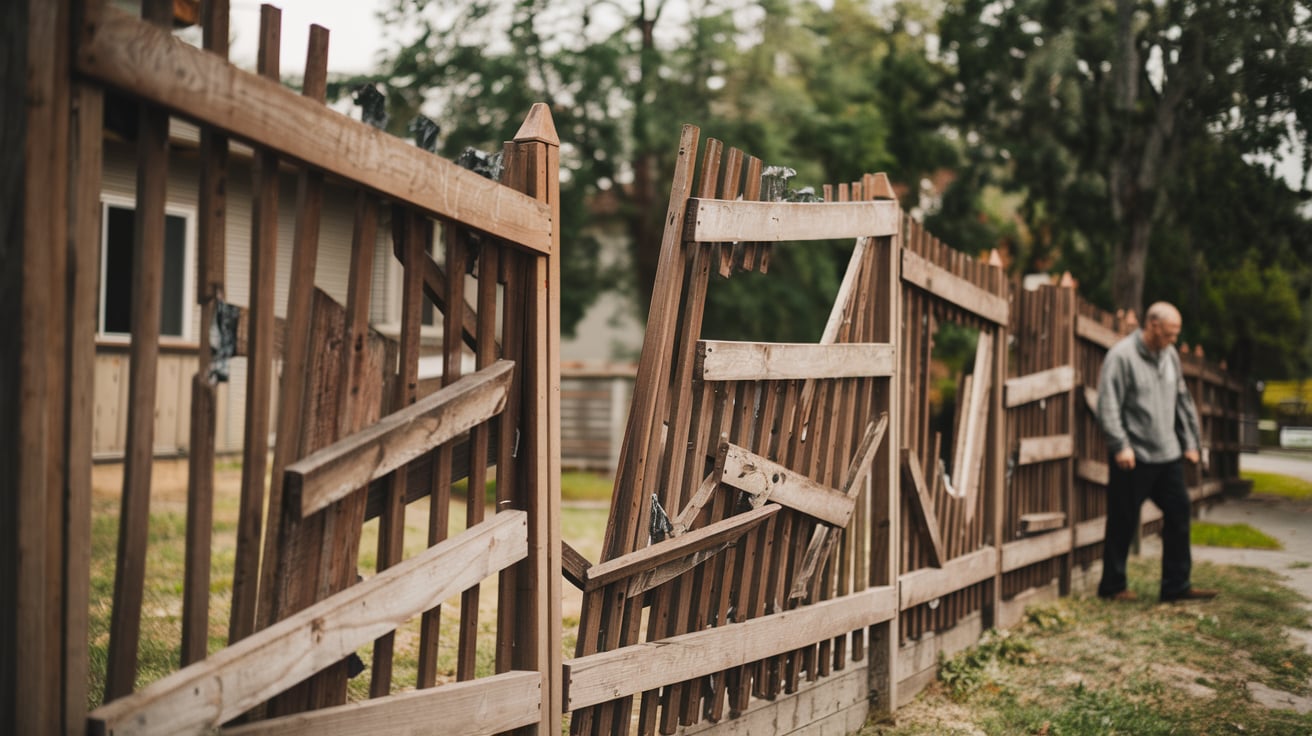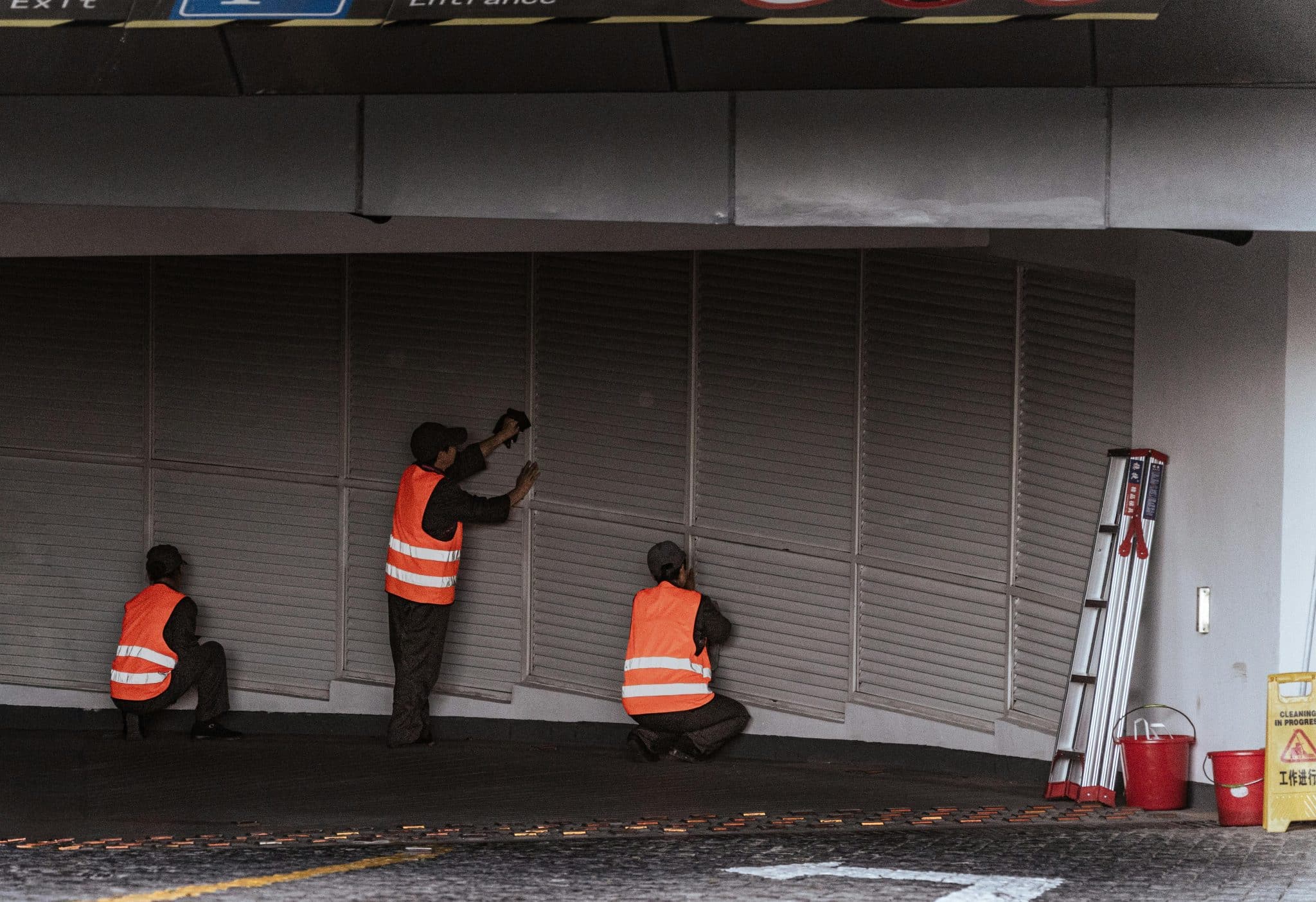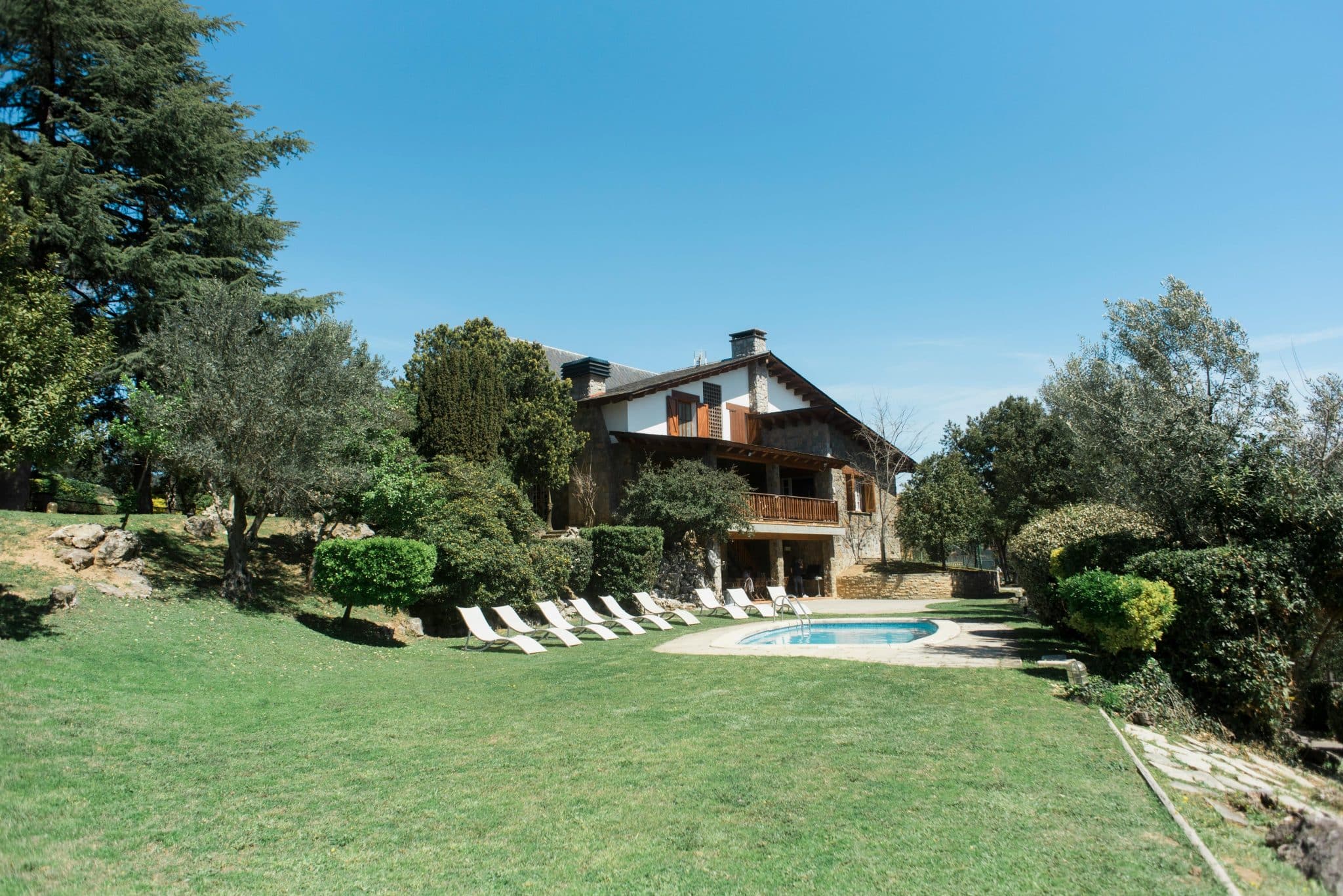Fence repairs often fall to the bottom of home to-do lists until they become eyesores or safety issues. Most homeowners put off these fixes due to cost worries without knowing what they might actually pay. Fixing your fence doesn’t need to break the bank.
With the right knowledge about materials, damage types, and repair options, you can make smart choices that fit your budget and needs. This manual breaks down real costs for different fence types and shows you ways to save money without cutting corners.
From simple wood picket replacements to complex metal welding jobs, we’ll walk through what affects your final bill. By the end, you’ll know exactly what to expect when getting quotes and how to talk with contractors about your project.
Let’s get started with the basics of fence repair costs.
Why Fence Repairs Are Worth the Investment?
Fixing your fence offers far more value than looks. A well-kept fence boosts your home’s first impression and can raise its market worth. Buyers notice fences right away, and a shabby one might make them walk away or offer less money.
Your fence forms a key part of your home safety system. Broken sections or loose boards can let in unwanted guests or let pets and kids wander out. Quick fixes help keep your family safe and give you peace of mind about who can see into your yard.
Small fence issues grow into big ones when left alone. A wobbly post might need a quick fix today. But wait a few months, and that same post could pull down whole fence sections during a storm.
Paying $100 now often saves you from a $1,000 bill later. Smart homeowners know that timely, small repairs prevent costly total replacements.
Different Fence Materials You Should Know
The type of material your fence is made from plays a major role in determining repair costs—some are easier and cheaper to fix, while others require specialized labor or full panel replacements.
1. Wood
Wood fences remain a top choice for many homes. Compared to other materials, they cost a middle amount to fix, and the work time varies depending on the damage type. Wood can rot when wet for too long.
It may also bend or twist in changing weather. Cedar and redwood last longer than pine, but they cost more to buy and fix. Most wood fence repairs involve replacing boards, pickets, or posts that have seen better days.
2. Vinyl (pvc)
Vinyl fences cost more upfront but need fewer fixes over time. When they do break, the fix is often quick but pricey. You can’t easily patch vinyl—whole panels need to be swapped out when cracked or broken.
The good news is that the work goes fast once you have the right parts. Vinyl holds up well to rain and sun but can crack in very cold weather or if hit hard.
3. Chain Link
Chain link fences offer the lowest cost option for both buying and fixing. These metal mesh fences can have issues like rust or bent sections from impacts. Fixing them is often simple and quick. The parts connect in basic ways that don’t need special skills.
Many fixes involve stretching the mesh back into place or replacing small sections. While not the best-looking, they serve their purpose at a low price point.
4. Metal (aluminum, Wrought Iron, Steel)
Metal Fences Sit at the Higher End of Repair Costs. When They Break, you May Need Welding, Which Requires Special Skills and Tools. Steel and Iron Can Rust and Need Fresh Paint to Stay Looking Good. Aluminum Won’t Rust but Can Still Bend or Break.
Metal Fence Parts Often Cost Much More than Wood or Vinyl. The Strong Points Are Their Strength and How Long They Last with Good Care.
5. Composite
Metal fences have higher repair costs. When they break, you may need welding, which requires special skills and tools. Steel and iron can rust and need fresh paint to stay looking good. Aluminum won’t rust but can still bend or break.
Metal fence parts often cost much more than wood or vinyl. The strong points are their strength and how long they last with good care.
Breaking Down the Cost of Fixing a Fence
| Factor | Type/level | Cost range | Notes |
|---|---|---|---|
| Damage level | Minor | $100–$300 | Loose pickets, missing boards, hardware tightening |
| Moderate | $250–$700 | Leaning posts, broken gates, and several damaged sections | |
| Major | $700–$1,500+ | Multiple posts, storm damage, structural failures | |
| Labor type | Handyman | $40–$80/hour | Basic repairs, single-section issues |
| Fence contractor | $60–$100+/hour | Complex work, full sections, permits | |
| Call-out fee | $150–$300 | Most pros charge this regardless of job size | |
| Other factors | Materials & parts | $50–$500+ | Concrete, pickets, rails, and hardware cost extra |
| Access issues | +10–30% | Slopes, bushes, and tight spaces add time | |
| Permits | $20–$150 | Required in many cities for structural changes | |
| Disposal fees | $50–$200 | Removing old materials from your property |
How to Get an Accurate Fence Repair Quote?
Count the number of damaged posts, panels, or boards that need attention. Document any slopes, uneven terrain, or access challenges that might affect the work process. Photos significantly improve the accuracy of quotes.
Take clear pictures from multiple angles, including wide shots that show the fence in relation to your property and close-ups that clearly show damage. Make sure to capture any rot, splintering, leaning sections, or broken hardware. Good lighting helps contractors spot issues that might otherwise be missed in shadows.
When speaking with potential contractors, ask specific questions to clarify their service. Find out whether they charge by the hour or by project scope and what warranty comes with their work. Inquire about who purchases materials and whether those costs are included in the quote.
Ask about their timeline for completing the repair and whether they handle any necessary permits or approvals.
Temporary Cost Fence Repair Options
- Put up low-cost wire mesh or plastic safety fencing as a short-term fix for safety issues.
- Try store-bought patch kits with special glues and materials made just for small fence holes.
- Fix only the parts of your fence that face the street or neighbors, and strengthen the rest.
- Turn old fence boards into raised garden boxes, wall art, or even outdoor furniture.
How Small Repair Mistakes Can Lead to Big Costs?
| Mistake | Why it increases costs |
|---|---|
| Waiting too long to address issues | Small damage can spread, leading to more extensive (and expensive) repairs later on. |
| Hiring unlicensed workers | Poor workmanship may require redoing the job, often at a higher cost. |
| Not knowing your fence material. | Using the wrong tools or materials can cause further damage and result in wasted expenses. |
| Skipping permit checks | Can lead to fines or being forced to redo the work to meet local codes. |
| Doing advanced repairs without proper tools | It increases the risk of mistakes, injury, or needing to hire a professional to fix your fix. |
Final Thoughts
Fence repairs may not seem urgent at first, but they play a key role in keeping your property secure, tidy, and appealing. Ignoring small issues can lead to far more expensive damage down the road, while timely repairs often cost less than you’d expect.
Whether you’re fixing a few loose boards or replacing damaged panels, knowing the basics of materials, labor, and cost ranges gives you more control over the process.
Getting detailed quotes from local pros, asking the right questions, and reviewing all charges can help you avoid surprises. If full repairs feel out of reach right now, simple patches or partial fixes can still make a big difference. The key is to stay ahead of wear and tear rather than waiting until things fall apart.
Take that first step today—inspect your fence, take clear photos, and reach out for quotes. A little time now can save you stress and money later.
Frequently Asked Questions
1. How Long Do Fence Repairs Typically Take to Complete?
Most Minor Fixes Take 1-3 Hours, While Major Repairs May Need 1-2 Full Days of Work.
2. Can I Fix Just One Section of My Fence Instead of the Whole Thing?
Yes, Spot Repairs on Specific Sections Work Well and Cost Less than Full-Fence Fixes.
3. Do I Need a Permit to Repair My Existing Fence?
Most Small Fixes Don’t Need Permits, but Check Local Rules for Post Replacements or Structural Changes.
4. What’s the Best Time of Year to Schedule Fence Repairs?
Spring and fall offer the best weather conditions, with moderate temperatures and less rain to slow down the work.















One Comment
pin up azerbaycan: pin up azerbaycan – pin-up